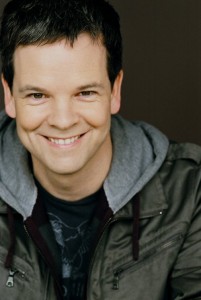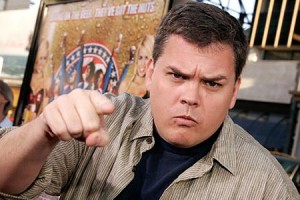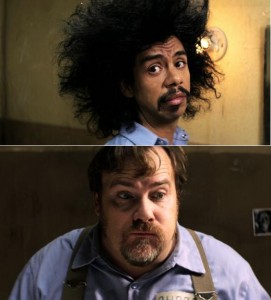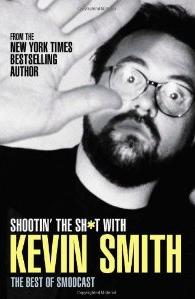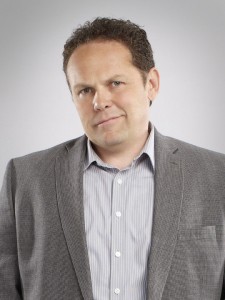It’s said that there is no such thing as fate. Don’t tell Kevin Pike that. As a 22 year old living in New England he had a choice to make as spring approached – head down to Florida to resume a previous job or take the ferry to Martha’s Vineyard, where a friend offered to get him a job as a waiter. It was early 1974 and the country was in the middle of an oil crisis (for those readers not old enough to remember, in 1973/74 gasoline was in short supply. If your license plate ended in an even number you could only fill your tank on certain days. The other days were reserved for those with an odd number. It got so bad that the government printed ration tickets, though they were never used). Because of the cost involved, Mr. Pike headed to the Vineyard. And the rest, as they say, is history.
Since his first foray into Hollywood via the film “Jaws,” Mr. Pike has worked on some of the most popular films of all time. They include “Back to the Future,” which earned him a BAFTA nomination for Best Special Effects, “Close Encounters of the Third Kind,” “Return of the Jedi,” “Indiana Jones and the Temple of Doom,” “Ed Wood” and “Fight Club.” For his work as the special effects supervisor for the television series “Earth 2” Mr. Pike received the Emmy Award for
Outstanding Individual Achievement in Special Visual Effects.
Mr. Pike is featured in the new book “Jaws: Memories from Martha’s Vineyard.” To help celebrate the books’ release, Mr. Pike graciously took time out to sit down with MovieMikes:
Mike Smith: How did you end up working on “Jaws?”
Kevin Pike: I started working on “Jaws” quite by accident. I had gone to Martha’s Vineyard to work at the Harborside Restaurant. I was a friend of the bartender and I had worked with him at a restaurant in Florida. He told me to come on up. At the time (1974) President Nixon had frozen prices and you couldn’t readily get gasoline on the highway to get to Florida so it caused me to re-direct and head off to Martha’s Vineyard early so I could get in on the summer season. On the reference of my friend the bartender I got a job at the Harborside Restaurant. I was a waiter but they had waitresses in mind so I ended up being a bus boy. One Saturday night a party of six men came in. They were having a great time. I could tell because normally our customers were very reserved. It’s like going to Las Vegas and the people playing cards are very reserved while the ones over at the craps table seem to have a party going on all the time. So I kind of paid attention to what they were talking about and deduced it had something to do with showbiz…with a film. The important part is that when they left to head back to the Kelley House where they were staying, when I bussed their table I found they had left behind a satchel…a valise. So I ran outside after them and found them still in the parking lot. I hollered, “Hey, did anybody leave this?” One of them turned to me and said, “Yes! Oh my gosh, are you kidding me? Do you know what’s in there?” I told him “no.” “They’re storyboards. You know what storyboards are, don’t you?” “No sir, I don’t” He explained that they were like a comic strip. When you make a movie you draw the whole thing out in pictures. So I asked him if he was making a movie. He said yes and I asked him what it was about. He said “it’s about a shark that’s going to eat your whole island!” That guy was Joe Alves, the production designer. Shortly thereafter, in a few days, I was hired on by the construction coordinator, Jimmy Woods. We started working on April 18, 1974. Jimmy gave us a pep talk before we started. He said that he knew some of us were finished carpenters that had helped build mansions. But we had to understand the way things were done in Hollywood. We throw walls together, slap some paint on them, shoot them and tear them down and throw them in the dump. He said that when he looked out at us he wanted to see two things and two things only: assholes or elbows!” He asked if there were any questions and I raised my hand. When he looked at me I asked him if I could be one of the elbows. He laughed and said “you’re with me.” After that we became close friends. I ended up being sort of his office coordinator. I would sweep the dirt floor and clean up after the guys who were working on the ORCA. I helped do all of the paperwork for the petty cash…buying everything from materials to snacks. I was basically locally hired labor that started from the bottom. I have a picture in my office. When we had 400 extras on the beach we only had (4) outhouses. And nobody would offer to clean them but me. So my friend snapped a picture of me at the right time, with me rinsing out a toilet. And it reminds me that I started at the bottom. I saw that movie from the unique perspective of a 22 year old on an island who was cleaning outhouses. I then started doing some work with the carpenters but it was obvious I wasn’t a carpenter so Ward Welton, the painter, grabbed me. And we painted everything they were building, from the ORCA to the sets being made for the production. Then in mid-May I was sent to meet a man named Roy Arbogast. I was going to help him unload the sharks. We had a winch system with a gin pole that went out through the top of the barn. They used the barn to store boats in the winter but we were going to use the upper floor as a workshop to work on the sharks. We stood in the open door of the barn and I could see the Edgartown Lighthouse on the Atlantic Ocean from our vantage point and sure enough one by one three trucks drove up with a shark on each truck, their tales sticking out. And with all the naiveté’ of a baby deer I asked “so you did all of the testing in the Pacific Ocean before you brought them here to the Atlantic Ocean?” And Roy said “no. Oh no. We haven’t had them in the ocean at all.” In fact, they hadn’t even taken the third shark out of the mold yet. I’m sure he couldn’t see the dollar signs that flashed in my eyes because I was only supposed to work on the crew for six weeks and I ended up working six months. And that is my beginning on working on “Jaws.”
MS: You also worked on “Close Encounters of the Third Kind,” “1941,” “Indiana Jones and the Temple of Doom” and “Jurassic Park,” As he grew more successful – confident is probably a better word – did you notice any differences in the way Steven Spielberg worked on set.
KP: Not at all. The closest I worked with him was on “Close Encounters and Indy 2.” On “Jaws” I was very much in the background, but I got to do a lot of things because of my capabilities and my energy and my interest. And having that , I got to learn a lot. My life was changed forever. I got to work with Steven again on “Close Encounters” because Roy Arbogast was going to supervise the Special Effects. I ended up doing six or seven pictures with Roy. He was my mentor and taught me everything I needed to learn from the very beginning. He helped me become an Effects Supervisor in my own rite. On “Close Encounters” we were very close to Steven on many levels from the very beginning of his ideas because this was really his dream project. Some of the other films you mentioned – “1941,” “Jurassic Park” – I didn’t have a lot of interaction with Steven because I didn’t have a lot to do. Mostly prop building. Same on “Hook.” “Indy 2” we did a lot together with the 2nd Unit, doing a lot of insert work at ILM. We also spent a lot of time doing the blue screen work for the mine shaft car and the raft coming out of the airplane. I also did his “Twilight Zone” episode. But there’s nothing that stands out as far as what became different. Nothing I can put my finger on. I can definitely say that he became much more confident having the hits he did under his belt. But he knows he has to make each film as good as he can make it. And I believe that’s what he internally strives to do.
MS: You’ve worked both on the “Star Trek” and “Star Wars” series. Did you consciously avoid one effect or prop on one film because it was similar to one from the other?
KP: When I worked on “Star Wars” it was on “Return of the Jedi.” The look of the films had already been established. The new parts for us were the full size Scout-walker and the Sarlac pit. Essentially we already had a production design element that was driven from George Lucas right from the beginning. “Star Trek” had derived a lot of it’s style from the television show. So the choice you ask about is usually not mine to make. And I’ve also found, by working on both “Jaws” and “Jaws 2,” that the second time it’s not the same kind of feeling. It’s not fresh…it’s not novel. So I desperately tried not to work on sequels or on the same television show I had worked on the month before. I wanted things to be new and fresh as long as I could be that selective. Of course sometimes you need a job and you need to make money. That’s part of the reality for everybody in this town. But I always try to avoid doing something that’s along the same lines I’ve done before.
MS: You’ve done both film and television. Do you have a preferred medium?
KP: Well the feature work is very creative. You can feel the joy from a solid story arc in the script…you get the beginning, middle and end. You put your good work into it and then you get to go see it at the premiere, which is a wonderful and rewarding feeling. It takes you a couple of viewings before you begin to start enjoying the film because you’re seeing your work and remembering your contributions and the work of others. It’s a different kind of feeling watching a film that you’ve worked on as opposed to seeing one you haven’t. But there’s also a great benefit in television. I remember when I was asked to work on “Earth 2,” which was a series. We literally packed up and went to Santa Fe for a year. We took our families and everything else and it became a big commitment. Because you’re prepping one show while you’re shooting another. There’s always a constant cycle of activity. You’re meeting new directors and reading new stories and meeting new actors. Sometimes there’s a new crew person rotating in. We did 22 hours on “Earth II.” It became a serious commitment. And the beauty of Santa Fe, New Mexico made it all rewarding. And I have to tell you, I made good money on that show. And I’ve always remembered that. So if you can get on a show you can actually do very well. And you become family. It’s an entirely different situation. It’s a different medium. I got a lot of reward from doing sit-com work. I did five or six projects with James Burrows, who is the guru of sit-coms. (NOTE: James Burrows, a 10-time Emmy winner, directed such classic television series as “TAXI,” “Cheers” and “Frasier”) Watching him work is like watching a genius in action. The cadence is entirely different for that medium and you have a live audience. So you get a spontaneous reward from the laughter. You’re the only other person on the crew that gets to put in a joke. The actor says a line and the audience laughs because it’s funny. I make the dishwasher overflow and they start laughing again. So there’s an entirely different reward between sit-coms and dramatic television to feature films. I also spend a lot of time on commercials. I might get a storyboard with seventeen shots on it, some of them are incredibly creative because they have a good budget. I cut my teeth on a lot of those commercials. So each medium itself has its own special place in my heart.
MS: What is your proudest special effect moment?
KP: Without a doubt I’d have to say it’s the work I did on “Back to the Future.” It was a tough road to get there. The demands of (director) Bob Zemeckis…he knew what he wanted and we had to make good on his idea. And when I read the script I knew that the car, and we didn’t yet know what kind of car it would be, I knew that the car would be iconic and I’m very happy and proud of my contributions. In fact I’d have to say that the majority of my fan base is because of the car. Kids that saw the movie are now at the age where they can try to make one. They want to know where they can find one or just want to share their interest in Delorean Motors. I’m impressed with the perpetuity of the film. I’m pleased with the fact that it’s as popular as it is. And I can tell you that everybody on the crew that read that script knew that it was really a great story. Bob Gale and Bob Zemeckis just wrote the heck out of that. And that’s why the film holds up as well as it does today…because the story is so strong all the way across the board.
MS: Where do you keep your Emmy?
KP: I keep my Emmy on a small, rolling Art Deco cocktail bar. When it’s time for a martini or a Pinot Noir, it’s there to remind me life can be sweet at times.
MS: What are you working on now?
KP: For the past two years I have been an agent. I formed The Filmtrix Agency and have a roster of about 45 clients right now. I service what they call “below the line”…I get crew person’s work. I also handle some writers and directors. We have a large literary side that we do. I have clients from all over the world. Italy. Spain. I have clients currently working in India. It’s turning out to be very busy for us and I’m very happy about the direction we’re going in.



